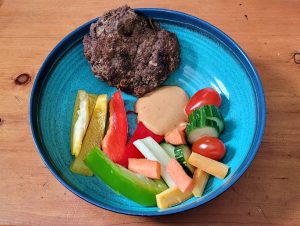Working together to remove barriers to healthy eating

Working together to remove barriers to healthy eating

Barriers to healthy eating can go far beyond the more common challenge of not having adequate time to shop for and prepare whole foods. For many people, lack of affordability makes it very difficult to prioritize a whole food approach to eating. For others, the challenge of cost is coupled with barriers presented by chronic illness or disability, which can make it difficult to plan meals or to shop for and prepare whole food on a regular basis.
In chatting with a friend of mine about their desire to include more vegetables in their meals, they asked whether we might make an arrangement where I would buy a little extra and incorporate some additional chopping into my weekly meal preparations. In return, they would pay me an amount reflective of the extra veggies.
This seemed to me to be a great idea that would not add much additional time at all to something that I am already doing on a regular basis. We agreed to give it a try. In many cases, we are already buying vegetables in large enough quantities to take advantage of lower prices, so the cost to my friend is nominal. My time amounts to about 5 extra minutes, plus the time to pop over with the veggies, which usually also includes an enjoyable few minutes of chatting.
The great news is that this approach is working for my friend! As you will see from their beautiful photo below, they are able to include a wider range of whole food in their meals, without a lot of additional cost. The worry of not feeling well enough to undertake preparation, which in the past may have resulted in fresh food going bad before it could be used, is also alleviated.
In its 2022 report, Addressing Food Insecurity in Peterborough, Peterborough Public Health noted that in 2021 alone over 2.3 million households in Ontario experienced food insecurity. Being food insecure is linked to a higher risk of poorer health outcomes for both children and adults, including in the area of mental health.
There is a definite need to engage in discussion and promote change in relation to the broader policy challenges that surround food insecurity. In the short-term, however, creative solutions are needed to ensure that our family, friends, and neighbours have access to healthy food.
The arrangement that my friend and I have made is easily implemented and enables them greater access to whole food with dignity and autonomy. This does not take away from the more formal supports that exist in the community to enable access to healthy food, but it is an approach that we thought might be easily replicated by people in all kinds of situations.
Even if your barrier is mainly related to time, sharing shopping and preparation duties between family members or friends, can help to increase the amount of whole food that can be included in the weekly meal rotation. There is also a place for indoor and outdoor growing of food in this regard. I hope that this post might inspire you to find your own creative ways of increasing access to whole food in your household and beyond.
Eating well is definitely a factor in feeling well. We all benefit when we and the people in our community are able to enjoy good physical and mental health. Finding informal and creative ways to increase access to whole food can be one part of the solution.
Source:
Addressing Food Insecurity in Peterborough, Peterborough Public Health, 2022.
https://www.peterboroughpublichealth.ca/wp-content/uploads/2022/11/2022-Report-Addressing-Food-Insecurity-in-Peterborough.pdf

